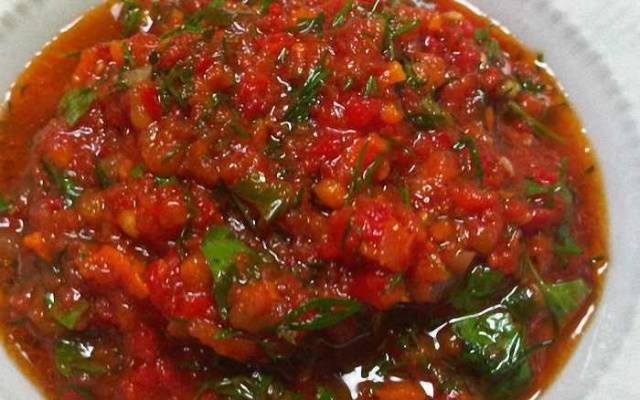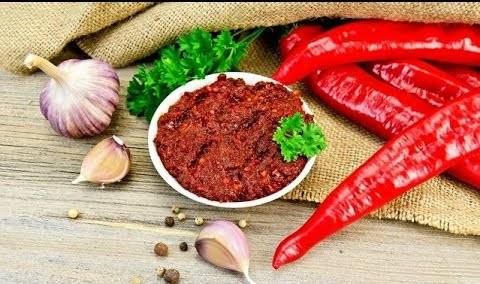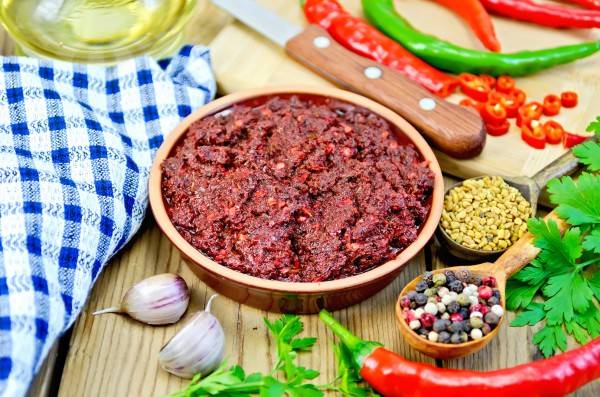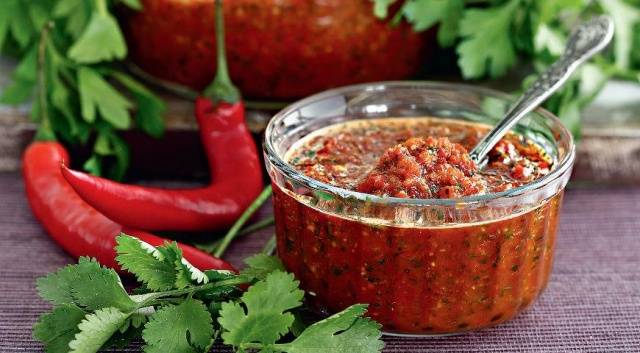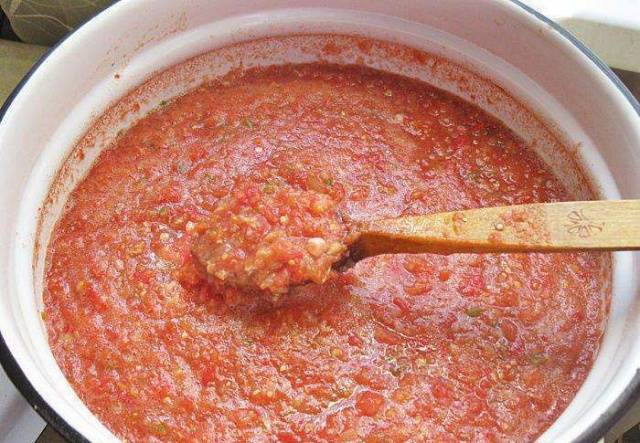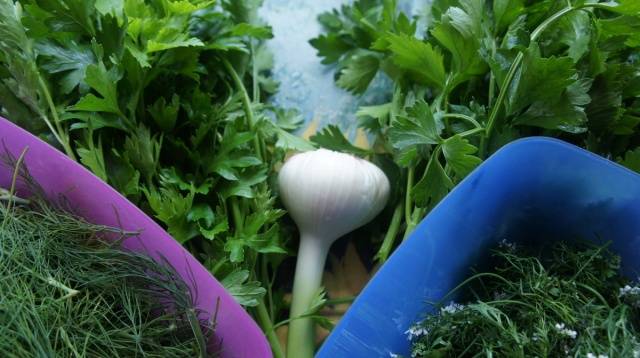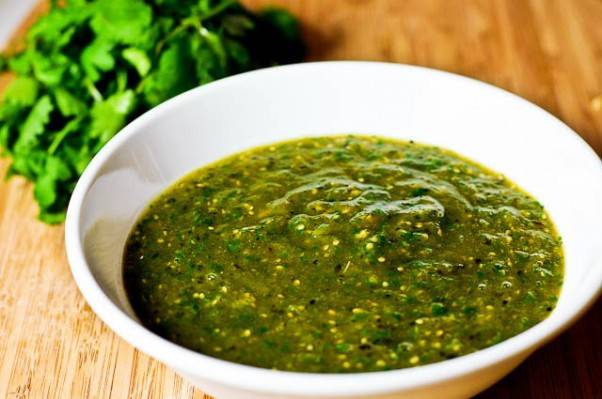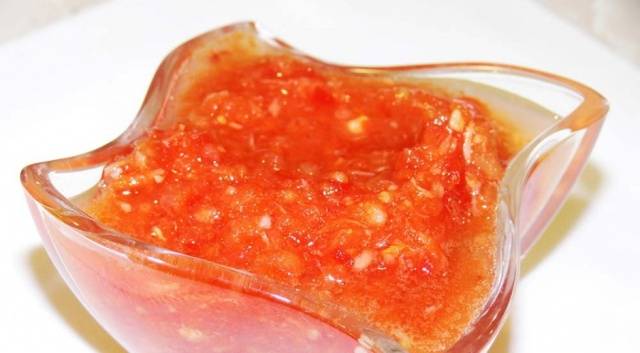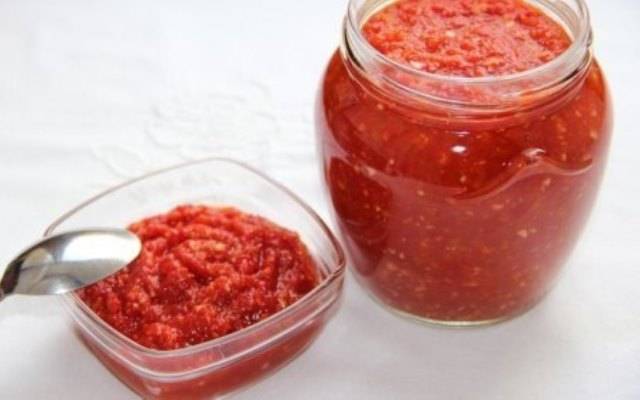Content
Among the many sauces and seasonings that conscientious housewives must prepare for the winter, adjika stands in a special place. It is difficult to imagine a daily lunch and a festive table without it. In addition, there are such an unimaginable number of recipes under this name that many already, probably, do not remember how it all began, and what a real classic adjika is.
But adjika, being a primordially Abkhaz dish, means in translated from the local dialect is just "salt and spices". That is, it became a sauce much later, and initially it was a mixture of various spicy herbs with hot pepper and salt. Nowadays, especially on the territory of Russia, adzhika is often called a ground mixture of a wide variety of vegetables and herbs, and sometimes even fruits and nuts. And, of course, this mixture is always seasoned with hot pepper and salt.
For the preservation of a variety of useful substances, and, above all, vitamins, adjika is often made raw, even without additional heat treatment. True, such a seasoning can only be stored in the refrigerator. There are also many recipes for adjika, when its ingredients are stewed, boiled and other types of cooking. This article will consider a variety of options for preparing adjika without subsequent sterilization, both with and without heat treatment.
Classical Abkhaz adjika
This seasoning is super spicy, so it is recommended only for special lovers of everything spicy, who also have impeccable health.
To make it, you need to take: 2 kg of hot pepper, preferably red, one and a half cups of medium-sized rock salt, 1 kg of garlic, 200 grams of ground dry seasonings (dill, hops-suneli, coriander) and 200 grams of various fresh herbs (parsley, cilantro , basil, savory, celery).
The garlic needs to be peeled off to form many white, shiny cloves. Wash the pepper well, cut it in two and carefully clean it from the tails, seeds and all internal partitions.
Rinse the greens, remove all dry and damaged areas and dry.
Then pass hot peppers, garlic and herbs through a meat grinder, stir, add salt and dry spices and stir well again. Ready adjika can be put in sterile half-liter jars and stored in a cool place without light. According to this recipe, you should get three half-liter jars of Abkhaz seasoning.
Adjika with tomatoes
This version of adjika was invented already in Russia, since tomatoes were never included in the classic adjika. Nevertheless, in the modern world, it is this adjika recipe has become almost a classic.
What you need to prepare it:
- Tomatoes - 3 kg;
- Bulgarian sweet pepper - 1.5 kg;
- Hot pepper - 200 grams;
- Garlic - 500 grams;
- Fresh herbs (basil, parsley, cilantro, dill) - 150 grams;
- Coarse salt - 150 grams;
- Granulated sugar - 175 grams;
- Vinegar 9% - 150 ml.
All vegetables and herbs must be washed well and cleaned of all excess.
If you chose the first option, grind all the herbs and vegetables with a meat grinder, mix with salt, vinegar and sugar, mix thoroughly and arrange in sterile jars.Adjika prepared in this way can only be stored in the refrigerator. But under the screw lid in the refrigerator, it can be stored until the next season.
In the second option, you need to act a little differently. First, the tomatoes are ground through a meat grinder, put in a large container and put on fire.
While they are boiling, peel the bell pepper from seeds and entrails and also pass it through a meat grinder. After the tomatoes have boiled for about 15-20 minutes and some of the moisture has evaporated from them, add chopped peppers to them.
At the same time, peel the garlic and cut it into wedges.
The garlic is twisted along with the hot pepper.
Continue simmering the bell peppers until they thicken, stirring occasionally. Approximately 40 minutes after the start of boiling the tomatoes, the vegetable mixture should reach the desired condition and you can add ground hot peppers with garlic to it.
After another 5-10 minutes, you can add chopped herbs, as well as sugar, salt and vinegar. After another five minutes, adjika can be tasted and if there are enough spices, then turn off the heating. Spread the finished seasoning in sterile jars, twist and, turning upside down, wrap with a thick cloth until it cools.
Georgian adjika
This option Caucasian adjika is also quite traditional and cooked without boiling. The seasoning turns out to be an intense green. To get two half-liter jars of seasoning as a result, you need to collect the following ingredients:
- Celery greens - 900 g;
- Parsley greens - 300 g;
- Cilantro - 600 g;
- Sweet bell pepper of white, yellow or light green color - 300 g;
- Hot green peppers - 300 g;
- Garlic - 6 medium heads;
- Peppermint - 50 g;
- Split walnuts - 200 g;
- Salt - 120 g;
- Ground black pepper - according to your taste.
All green grass must be washed well, sorted out, freed from dried and wilted parts and dried in the shade on a paper towel. Peel the garlic and divide into wedges. Wash both types of pepper, free from the inner contents and rinse well again under running water. If you have wounds on your hands, be sure to use gloves when dealing with garlic and hot peppers.
After all the prepared adjika components are dry, grind them all with a meat grinder. Don't forget walnuts. Then you can add black pepper and salt and mix thoroughly.
Arrange the prepared seasoning in small jars and store it in the refrigerator.
Adjika with horseradish
This version of adjika can rightfully be called a traditional Russian sauce, since in addition to garlic and hot pepper, it also includes the classic Russian hot seasoning - horseradish. So, to make it, you need to find 2.5 kg of juicy and ripe tomatoes, 1.5 kg of bell pepper, 350 g of garlic, 350 g of horseradish and 350 g of hot pepper.
All vegetables are cleaned of impurities, tomatoes and horseradish - from the skin, garlic - from the husk, and peppers - from the tails and seed chambers. Then all vegetables are ground with a meat grinder and mixed with each other. Only horseradish needs to be grinded through a meat grinder last, so that it does not have time to fizzle out. 200 g of salt and 200 ml of 6% vinegar are added to the grated mass. After thorough mixing, ready-made adjika is laid out in dry sterilized jars and placed in the refrigerator for storage.
Adjika with apples
This version of adjika turns out to be so tender and delicious that it can no longer be attributed to sauces, but to separate dishes that are served as an appetizer.
First, cook 5 kg of tomatoes and 1 kg each of carrots, apples, bell peppers, as well as 300 g of garlic and 150 g of hot peppers.
From the auxiliary ingredients, you need to take 0.5 kg of sugar and 0.5 liters of vegetable oil. Salt and vinegar are added to this adjika during the manufacturing process according to your taste.
Vegetables and fruits are washed and traditionally cleaned of all excess. Then they are cut into small pieces and ground through a meat grinder in any sequence. Everything except garlic.
All fruit and vegetable mass, with the exception of garlic, after thorough kneading, is laid out in a saucepan with a thick bottom and placed on fire. After boiling, vegetable oil is poured into it and sugar and salt are added. The whole mass is cooked for about an hour. It is advisable to stir it periodically using a wooden spatula.
Then a garlic mixture with salt and vinegar are added to the adjika. Everything is boiled down for about half an hour. Be sure to taste the ready-made adjika and add salt and vinegar if necessary.
While still hot, the seasoning is laid out in dry, sterilized jars, rolled up and stored at room temperature.
Some secrets of making adjika
There are some peculiarities, the knowledge of which can help you in preparing adjika according to any recipe.
- Adjika according to classic recipes is prepared exclusively from coarse rock salt without any additives.
- Hot pepper pods can be used both fresh and dried.
- If you want to increase the pungency of the seasoning, use hot peppers with the seeds. To reduce its pungency, part of the hot pepper can be replaced with sweet peppers or carrots.
- All spices, herbs and garlic for making adjika are traditionally ground in a stone or wooden mortar.
- The best herbs that go well with hot peppers are marjoram, dill, savory, basil, cumin, bay leaf, coriander, blue fenugreek, and saffron.
- To give the seasoning a richer flavor, spices and spices are usually roasted in a dry pan without adding oil.
- Garlic for cooking adjika is best taken with a purple tint.
- Fleshy tomatoes are chosen for seasoning. Watery varieties should be avoided, as well as damaged or overripe fruit.
- A meat grinder is most suitable for chopping vegetables. Using a blender can turn vegetables and herbs into a puree that is unsuitable for adjika.
- It is best to use metal lids to close cans of adjika. Nylon can only be used for those seasonings that will be stored in the refrigerator.
Adjika is popular with many families. Try to cook it according to all the recipes described above, and you will definitely find something to your taste.
